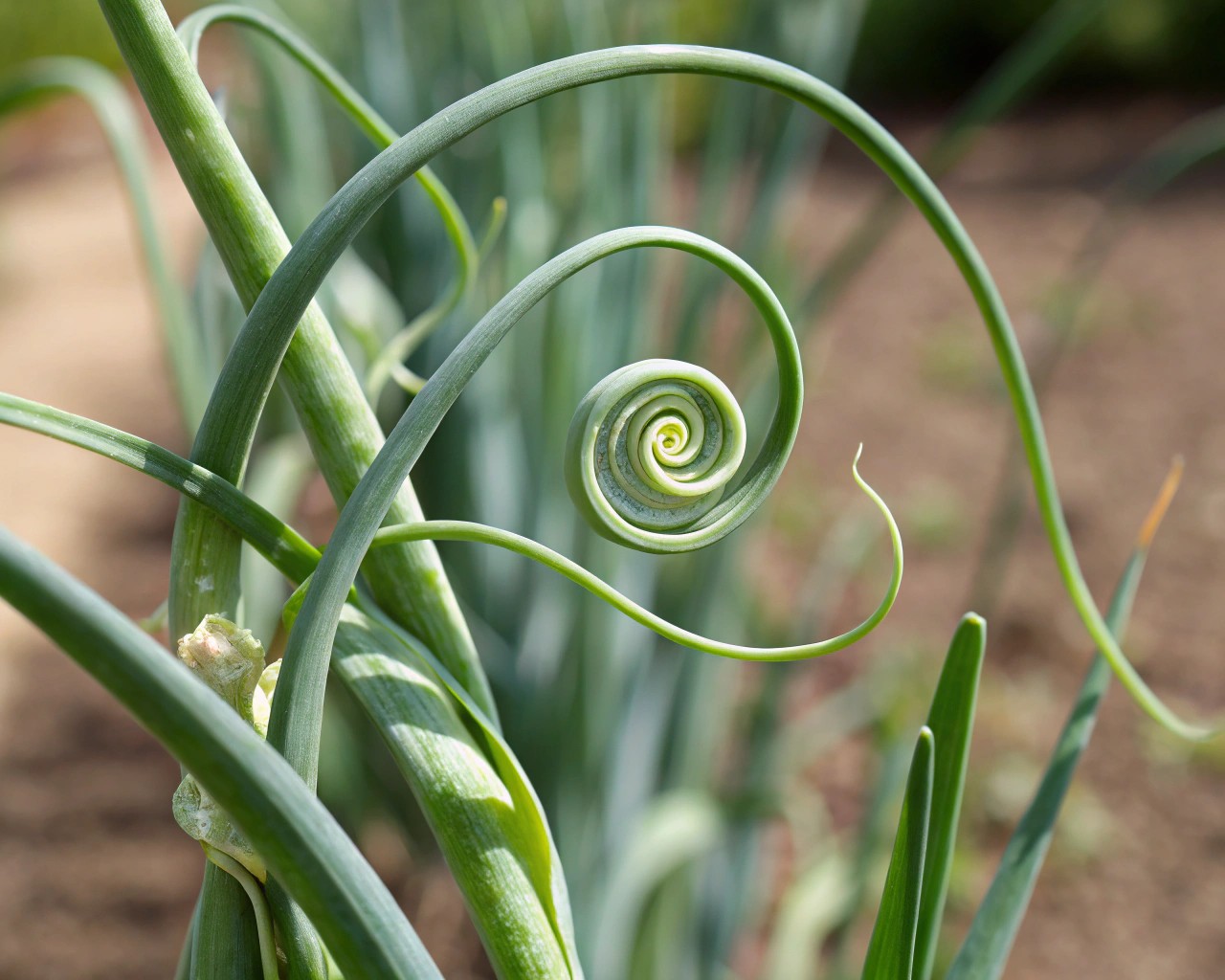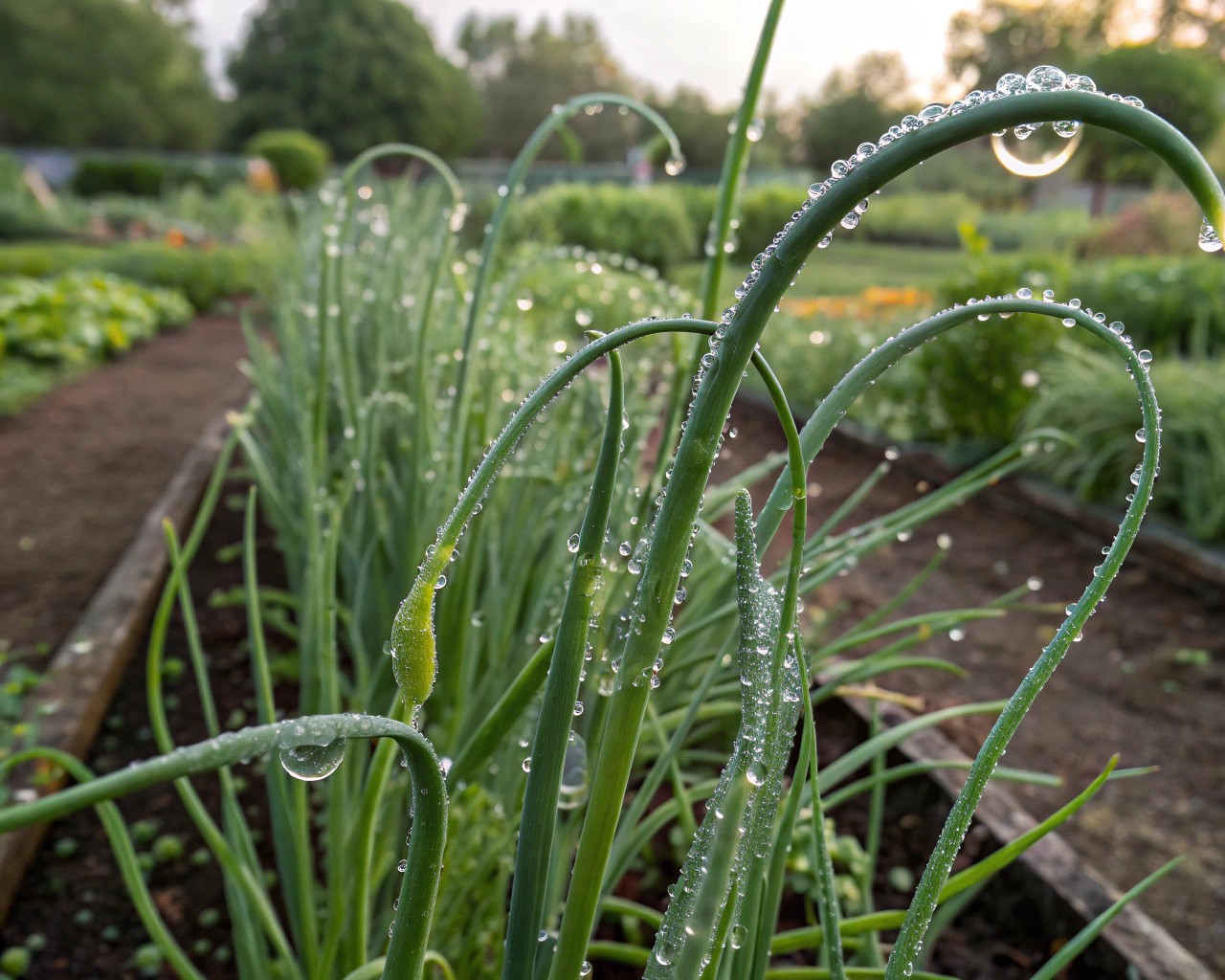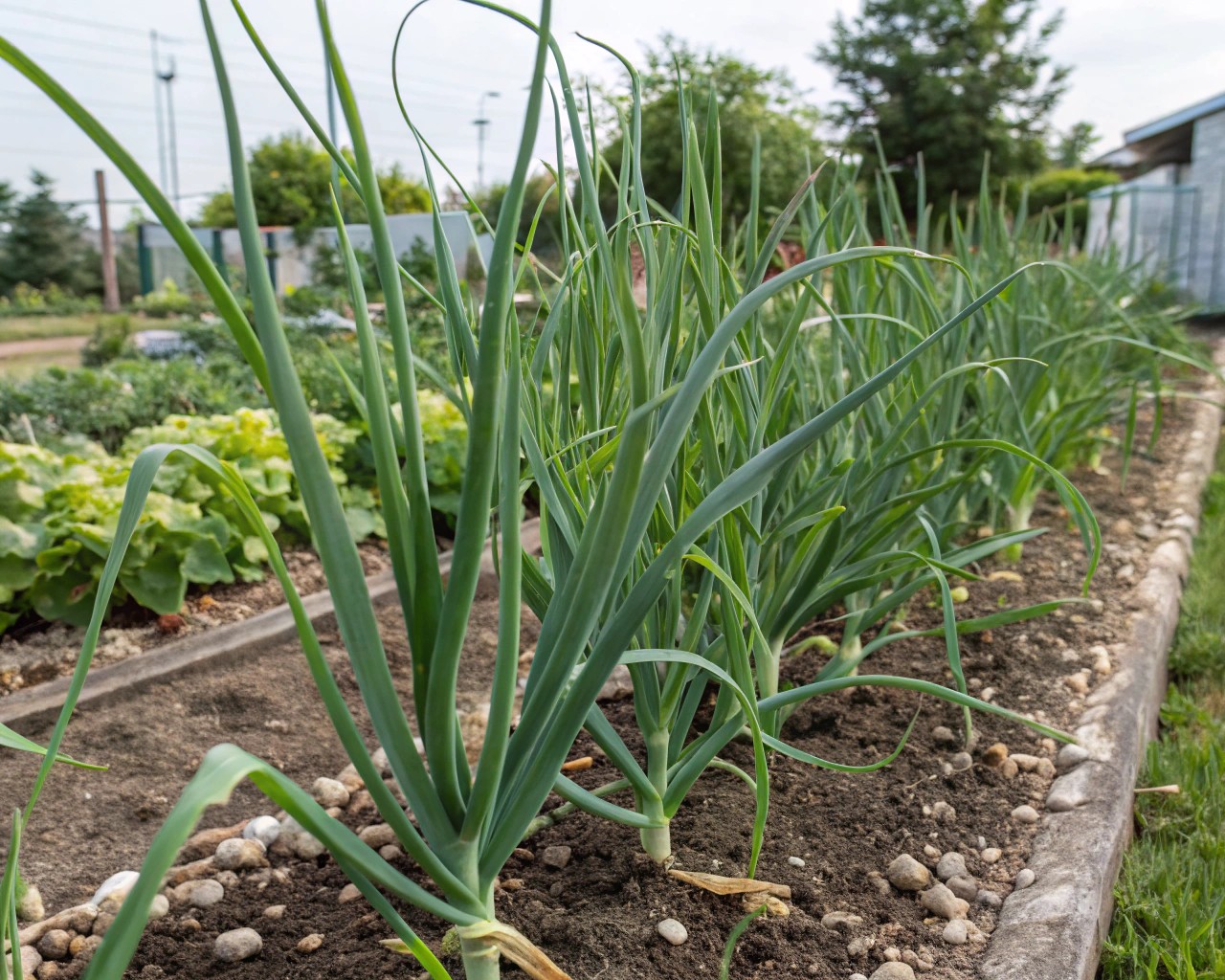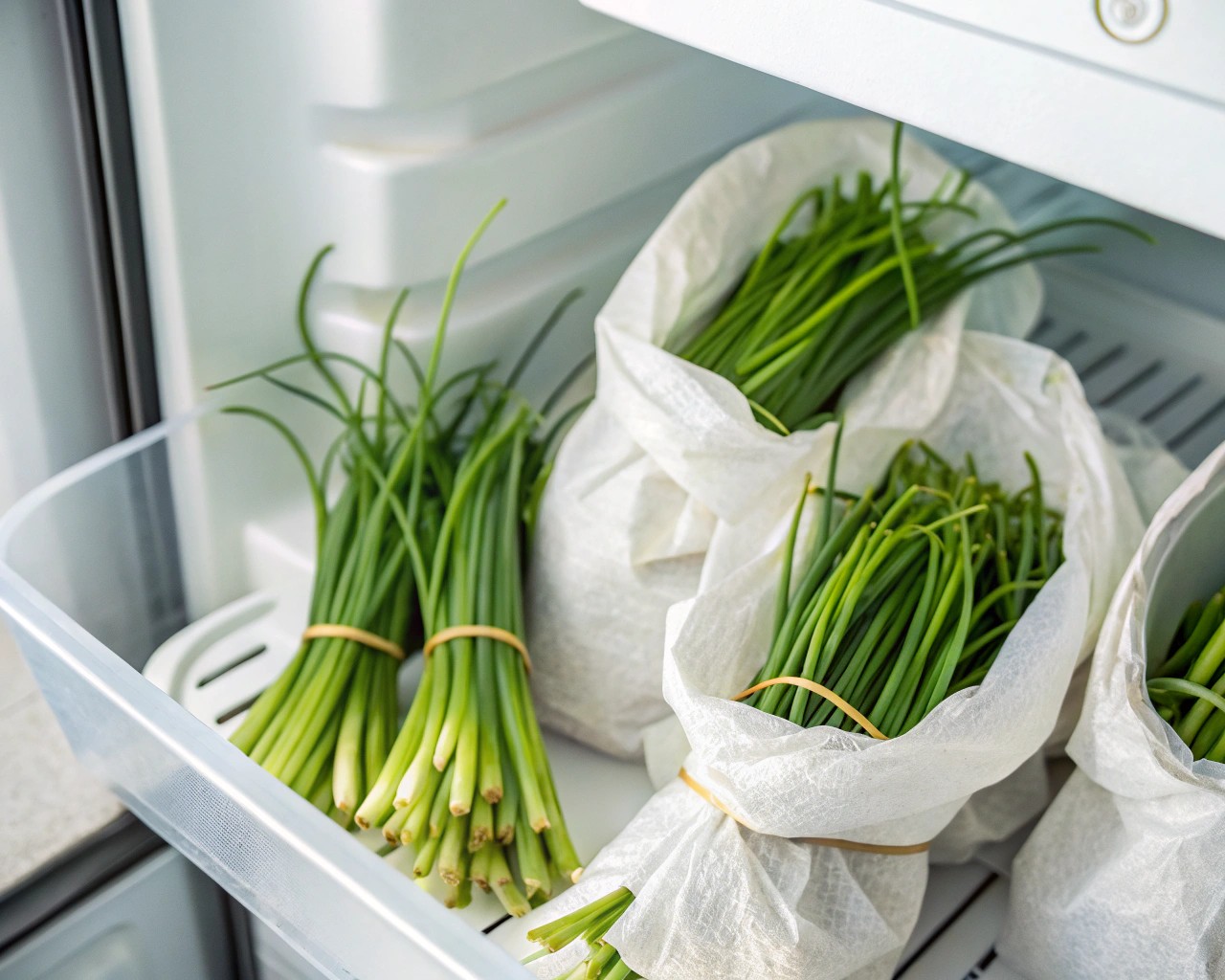Understanding Garlic Scapes: Nature’s Edible Architecture
Garlic scapes are the firm, round flower stalks that develop from the center of hardneck garlic plants as part of their natural reproductive cycle. These distinctive structures emerge as thick, smooth stems that differ from the plant’s flat leaves, eventually curling into recognizable spirals. At their tip forms the bulbil, a small cluster of potential garlic clones.
Scapes form only in hardneck varieties, which are best suited for colder climates and require a vernalization period of about 10 weeks. These garlic types thrive in USDA Zones 1–5. By contrast, softneck garlic, more common in grocery stores and warmer climates, rarely develops scapes under normal conditions.
The emergence of a scape signals that the underground bulb is nearing maturity—typically three weeks before harvest. This provides a natural calendar cue that helps gardeners plan not only their scape harvest but also final bulb lifting.
Optimal Timing: Reading Nature’s Calendar

Scape appearance varies by region. In Zones 3–4, scapes appear in late June; in Zones 5–6, around mid-June; and in Zones 7–8, as early as late May. These patterns reflect accumulated heat, day length, and soil conditions.
The best time to harvest is when the scape forms its first full loop or spiral, but before it straightens upward. At this stage, the scape is tender for eating and energy is still being diverted toward bulb growth. Cutting too early reduces the yield, while harvesting too late results in fibrous stalks and reduced bulb size.
Weather plays a key role. Heatwaves above 91°F (33°C) accelerate bulb maturity, shortening the scape harvesting window. That’s why experienced gardeners inspect scapes every 2–3 days during peak season.
Key Visual Stages
- Emergence: scape appears straight from the center
- Curling: the stem forms one full spiral (ideal harvest time)
- Straightening: scape rises upward and thickens (past ideal stage)
Tip: In fluctuating climates, track local soil temperature and observe day-to-day stem movement to time your harvest precisely.
Harvesting Techniques: The Art of Extraction

There are two common harvesting methods:
- Cutting – using clean scissors to snip the scape at the base
- Pulling – gently tugging upward to extract the entire stalk
Cutting is quick and reduces plant disturbance—ideal for larger gardens. However, it yields shorter scapes and may leave some edible portion in the stalk.
Pulling, while slower, produces a longer, more tender scape. When done correctly, it creates a soft “pop” as the internal stalk detaches fully.
Pulling Best Practices
- Harvest mid-morning to early afternoon for best wound healing
- Grasp near the bulbil and pull steadily upward
- Use your second hand to guide if resistance occurs
The Science Behind Scape Removal: Why It Matters

Studies from the University of Guelph show that removing garlic scapes improves bulb yield by 20–30%. This is because scape development competes for energy that would otherwise go into clove growth.
By removing the reproductive structure early, the garlic plant redirects its resources toward the bulb. The key is to harvest after curling but before straightening, maximizing bulb size without sacrificing scape quality.
Benefits of Timely Scape Removal
- Larger bulbs with more uniform cloves
- Improved skin quality for better storage
- Greater density and overall weight
While some believe leaving scapes on extends shelf life, research suggests that it’s the smaller size (not the scape) that affects storage. Well-timed removal actually improves both size and storage.
Storage and Preservation: Extending the Harvest

Fresh garlic scapes keep for 3–6 weeks in a fridge crisper drawer. Wrap them in a damp paper towel and seal in a plastic bag to maintain moisture.
For short-term kitchen use, keep scapes upright in a jar of water—like cut flowers. Refresh water daily, and they’ll stay crisp for up to a week.
Freezing Garlic Scapes
- Cut into pieces
- Blanch for 2 minutes
- Shock in ice water
- Freeze flat on trays, then transfer to bags
Scapes lose some texture when frozen but retain their flavor—perfect for sautés, pestos, or stir-fries.
Tip: Freeze chopped scapes in oil using ice cube trays for instant flavor boosts in cooking.
Climate Zone Considerations and Variety Differences
Different garlic groups behave differently:
| Garlic Group | Scape Behavior | Zones |
|---|---|---|
| Rocambole | Early, strong spirals | 3–6 |
| Purple Stripe | Distinct curls, early maturing | 2–7 |
| Turban | Short window, quick to overripe | 5–8 |
| Creole | Late-emerging, heat tolerant | 7–9 |
Tip: In hot climates, scape harvests can compress into a single week. Daily observation is key.
Integrating Scape Harvesting into Garden Strategy
Treating scapes as a dual crop unlocks both culinary and horticultural benefits. By planning for scape collection alongside bulb harvest, gardeners move toward a multi-harvest approach that enhances overall garden productivity.
Experienced growers time their scape harvest alongside other maintenance tasks like weeding, mulching, or irrigation checks. This habit transforms harvesting into part of a wider garden rhythm.
Seasonal Planning Checklist
- Late spring: track scape formation
- Early summer: harvest loops daily
- Post-harvest: prep for bulb lifting
